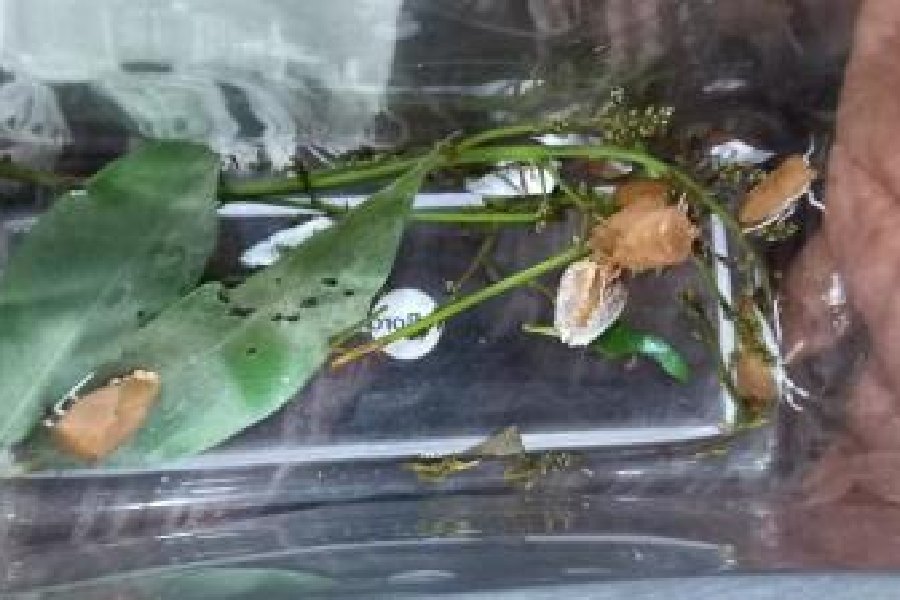The luscious litchis of Bihar, including the Shahi litchi of Muzaffarpur that boasts of a GI tag, are facing a grave threat from a super-resilient stink bug that is spreading fast and attacking the trees across the state.
The litchi trees are now in their flowering phase and the farmers are helplessly watching the stink bug (Tessaratoma javanica) destroy the flowers and leaves.
“The infestation is unprecedented. It has spread across various parts of the litchi-producing districts here. The situation is such that if the central and state governments do not collaborate and help farmers, litchis could be wiped out from Bihar,” Bhola Nath Jha, a top litchi producer of Muzaffarpur, told The Telegraph.
Jha pointed out that routine pesticides did not have any effect on the bug and small farmers were unable to afford the costlier pesticides that could curb its spread.
“We cannot spray pesticides during the blossoming stage and have to helplessly watch the bug destroy the flowers and leaves. A special, concerted drive by the government is the need of the hour or the litchi trees will not survive. The government should provide subsidies for pesticides to farmers,” Jha added.
Santu Mahto, a litchi grower at Rahua in Muzaffarpur district, is facing a similar predicament.
“There will be no fruit if the insects eat the flowers. Litchi is the main cash crop for me and it seems all my plans for the year are going to go haywire. I am not even sure if my trees are going to survive the attack,” Mahto said.
The ICAR-National Research Centre on Litchi (NRCL) in Muzaffarpur has also witnessed the stinky bug infestation at its secluded farm where scientists conduct research work by adopting the best cultivation practices and safeguards.
NRCL director Bikash Das said the country had not witnessed a stinky-bug infestation on this scale earlier. It was noticed in the Northeast a few years ago and then in Jharkhand. Its first infestation in Bihar occurred at Mehsi block in the East Champaran district.
“This year the stinky bug is being reported from litchi orchards in Muzaffarpur and other districts. The situation is more worrisome because this is a big that multiplies very fast. The female bug lays 12-14 eggs at least eight to 10 times during its lifecycle. Since the bug’s biomass is large, more pesticide is needed to kill it,” Das said.
“But the difficulty is that the adult insect is clever and has wings. The moment it gets the smell of pesticides, it flies away to other farms or trees, only to return when the effect of the pesticide wears away. All farmers must spray pesticides at the same time in a coordinated manner to effectively curb the bug or else it would not yield any result,” Das added.
The NRCL director pointed out that pesticides could not kill the bug easily. It just becomes unconscious and drops to the ground. It becomes active again in a couple of days.
The NRCL has asked the farmers to wear gloves, collect the unconscious insects and bury them.
It has also issued advisories to litchi-growing districts and the state government about ways to tackle the bug and recommended the use of a mix of Lambda-cyhalothrin and Profenofos pesticides.
Litchi is cultivated across 98,000 hectares in India, with the annual production pegged at 7 lakh tonnes. Bihar grows litchi on 34,000 hectares, producing around 2.8 lakh tonnes, or 40 per cent of the country’s output. Most of the fruit from the state is produced in Muzaffarpur and its neighbouring districts.











